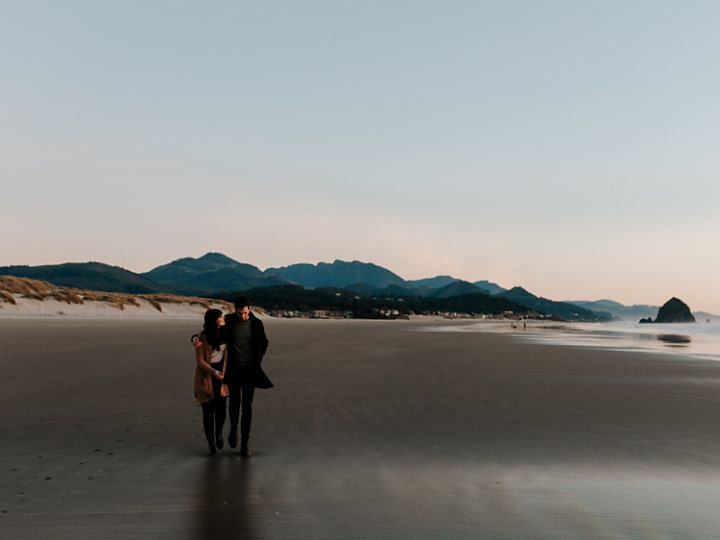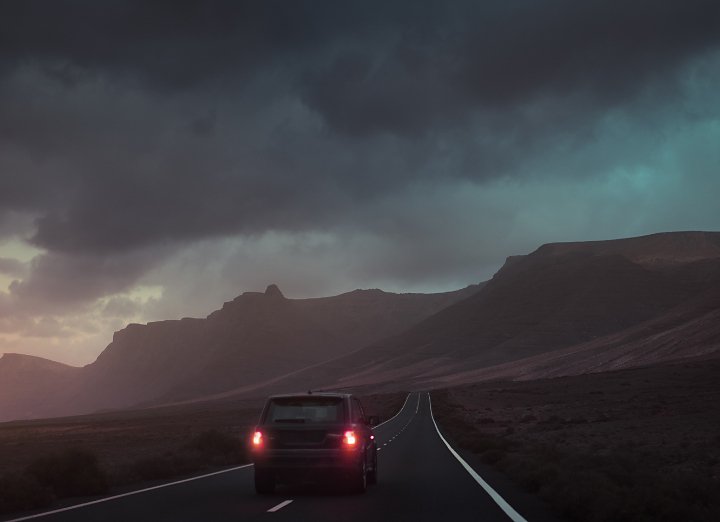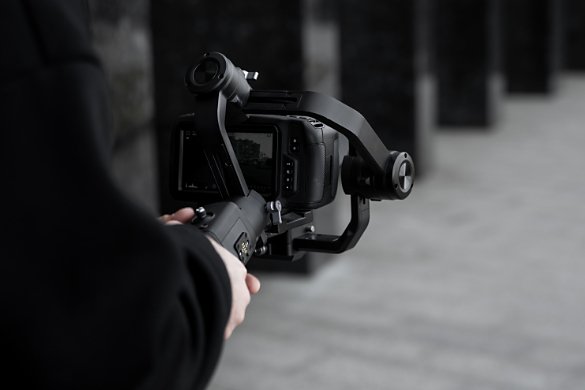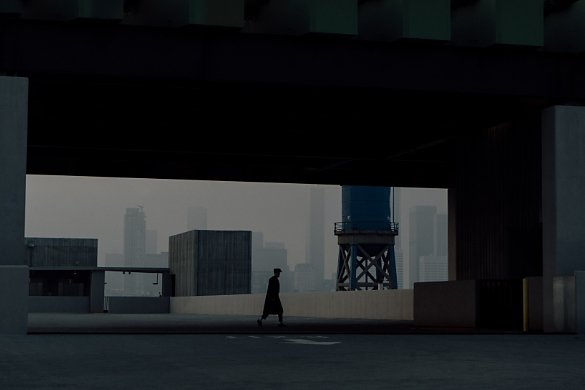Take a minute. We'll help you figure it out.

VIDEO
Go long: Use long shots to establish and frame your film.
Pulling back for a long shot can give your audience a sense of place and scope. Learn how to use this type of cinematography to grab your audience.
What is a long shot?
- A long shot, sometimes referred to as a wide or a full shot, is a foundational type of camera shot in the cinematographer’s toolbox.
- Long shots center your audience in the scenes they’re about to witness, and understanding this camera angle is key to your success as a filmmaker.
- You don’t necessarily need expensive equipment to create one, though the appropriate camera lens and a shot list can really help.
Long shots live up to their name.
You can think of long shots as your big picture shots. The job of this particular type of framing is to bring your audience into the world you’re creating on film. Unlike close-ups or medium shots, they show a comprehensive view of the scene.
Originally, long shots were part of the earliest filmmaking techniques in feature film because they function similarly to pulling up the curtain on a stage play. The audience sees everything, and they know where the story’s headed. “Long shots allow you to show your style — wardrobe, set, cinematography, camera angle — they let you fly your flag as a filmmaker,” says videographer Lisa Bolden.
While some long shots are establishing shots (scenes designed to be the opener of a new section of your film), this is not always the case. Long shots can convey a feeling — think Peter Jackson’s Lord of the Rings films, where you are often treated to long shots of characters running along plains and mountains, demonstrating the scale of their quest. “Typically, you’re only using it at the beginning of a scene,” says director Alicia J. Rose, “but it can also be used to work out other continuity issues or confusing elements in a scene.”
At the end of the day, a long shot is about giving your audience context to more fully experience the film you’re making. Here’s what makes for a good one.
What makes a quality long shot?
A compelling long shot guides your audience through your film. With these principles, you’ll elevate the common shot to something more.
1. Lighting
As in all things film and photography, light is the foundation of everything you’ll do. Many long shots are taken outdoors, so often you’ll have sunlight to provide adequate lighting, but regardless of where you’re shooting, remember that light equals mood.
2. Framing, subject, and composition.
The frame of a film is a window into your world. If you were peeking through a window out at a street, what would you see? What might you be looking for? It’s important when you build a compelling image to think about which subjects will be in frame and where they’ll be positioned relative to each other and the camera. Do you want eye level? A low-angle shot? Or are you going to go for a bird’s-eye? Subverting or rewarding audience expectations and point of view starts with playing with what they expect to see in your long shot. “A long shot gives the viewer context and brings clues to the scene that let them know where they are,” says Bolden.
3. Focus.
What’s in focus and what’s out of focus in your long shot is an important decision. You can use a lens with a massive depth of field if you prefer to keep everything in focus, or you can use a focus rack to draw the audience’s attention to a specific area. The right call is up to you.
4. Movement.
There are two types of movement in a long shot — camera movement and movement within the frame. Having a plan for both and calling it out in your shooting script will make sure that you know what you need to do when you need to do it, especially if you’re shooting a long take.
Long shot inspiration.
If you’re looking for inspiration for how to build your long shots, there are hundreds upon hundreds of films to draw inspiration from. It can often be helpful to think about genre. Here are a few examples of directors who take advantage of the long shot.
- Westerns. The work of directors like Sergio Leone, Clint Eastwood, and John Ford offer many compelling examples of long shots. Check out Unforgiven’s introduction to Eastwood’s character, or many of the sequences in Stagecoach.
- Action films. If you want epic long shots, look no further than the Mission Impossible series. In Ghost Protocol, the sequences surrounding the Burj Khalifa establish the scope and danger of the stunts that the characters (and the actors) will be performing.
- Period drama. In films that take audiences back to different periods of time or moments in history, the long shot is critical for establishing locations that they might be completely unfamiliar with. Nobody has ever seen a colosseum in use before, but thanks to Ridley Scott’s Gladiator, people now have an idea.

Shooting your shot.
Now that you have an understanding of what elements comprise a great long shot, equipment comes next. Depending on your location, which will often be outdoors, you’ll want to make sure that you have a wide-angle lens or a zoom lens capable of going wide angle. Lenses that have a focal length from 23mm to 70mm are a great place to start. You can also select something like a 16mm lens, but that might result in a “fish-eye” look, which may work well for the scene you’re setting. “Sometimes a wider lens will make your image look like it’s moving less, which can be great for many scenes,” says Rose.
Because a wide-angle lens can set the tone for an entire scene (an entire film even), make sure the one you get is compelling. Take your time, and maybe even shoot more than you need — you can always cut later. Plus, depending on how your camera moves during the shot, you might need to consider setting up dolly rails or renting a Steadicam to keep things stabilized and smooth.


Focus on editing your long shots.
Once your film is in the can (or the SD card), it’s time to head to your editing software. Adobe Premiere Pro gives you the tools to edit your film down to a single frame, so your long shots don’t come in a second over or under time. On top of powerful editing tools, there are dozens of tutorials designed to help you figure out how to create and improve every aspect of your filmmaking repertoire. The perfect long shot is in your grasp — now learn how to create other compelling aspects of filmmaking.
Share this article